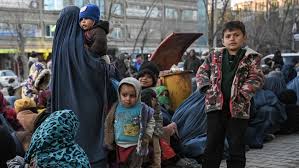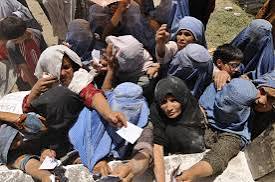What is the main reason for the economic crisis in Afghanistan?
The current economic crisis in Afghanistan has several causes, including internal and external factors. Some of the most important reasons are:
- Cut off foreign aid:
After the Taliban came to power in August 2021, many Western countries and international organizations stopped their financial aid to Afghanistan. These aids accounted for approximately 75% of the Afghan government’s budget, and their cessation had a severe impact on the economy. - Blockage of Afghanistan’s foreign exchange reserves:
The United States and other countries have frozen billions of dollars in foreign reserves of the Central Bank of Afghanistan. This caused the depreciation of the Afghani currency and severe inflation. - Widespread unemployment:
With the fall of the previous government and the restrictions imposed by the Taliban, many economic projects were halted and thousands of people lost their jobs. - Banking crisis:
Restrictions imposed on banks, lack of liquidity and problems of access to money have caused a banking crisis in Afghanistan, which has disrupted the process of trade and business. - Reduction of export and investment:
The security situation and political uncertainty have reduced domestic and foreign investment. Also, trade restrictions and reduction of domestic production have affected exports. - Tax increase and pressure on businesses:
To make up for the budget deficit, the Taliban have increased taxes, which has put a lot of pressure on merchants and small businesses. - Drought and environmental crisis:
Climate change and persistent drought have reduced agricultural production. Agriculture, which is the backbone of Afghanistan’s economy, has been severely affected. - Immigration of skilled labor:
Many specialists and skilled workers have left the country, which has reduced productivity and economic capacity.
Together, these factors have caused Afghanistan to face one of the worst economic crises in its history.
Afghanistan’s economic crisis
Afghanistan’s economic crisis is one of the deepest challenges of this country after the recent political developments. This crisis is rooted in internal and external factors that have intensified over the past years. In the following, the most important aspects and factors of Afghanistan’s economic crisis are described:
1. Reducing foreign aid
Afghanistan has been heavily dependent on foreign aid for the past two decades. After the Taliban took control of the country in 2021, most donor countries and international organizations stopped their financial aid. These grants used to provide approximately 75% of the Afghan government’s budget, and with its cutoff, the Taliban government faced a severe lack of financial resources.
2. Blocking of foreign exchange reserves
More than 9 billion dollars of Afghanistan’s foreign exchange reserves, which were kept in foreign banks, were frozen after the Taliban came to power. This action limited Afghanistan’s access to international financial resources and caused a decrease in the value of the national (Afghan) currency and severe inflation.
3. Banking and financial crisis
Afghanistan’s banking system is facing serious limitations. Banks are unable to provide normal services due to lack of liquidity and international restrictions. This caused people to lose their trust in banks and businesses to have difficulty in financing.
4. Increase in unemployment and economic recession
With the fall of the previous government, development projects were stopped and thousands of jobs were lost. Many women have also been excluded from the labor market due to Taliban restrictions, which has negatively affected the families’ economy.
5. Drought and agricultural crisis
Afghanistan is heavily dependent on agriculture, but successive droughts and climate change have reduced the production of agricultural products. This issue has increased the price of food and reduced the income of farmers.
6. Tax increase and pressure on businessmen
The Taliban have increased taxes to compensate for the decrease in government revenues. This has put a lot of pressure on traders and small businesses and has caused some of them to close.
7. Migration of skilled labor
After the political changes, many skilled and specialized labor forces left Afghanistan. This migration has reduced economic productivity and limited the country’s reconstruction capacity.
8. Corruption and weak economic management
The lack of transparency in the economic and financial management of the Taliban government has increased corruption and abuse of limited resources. The lack of expertise and comprehensive economic plans has also increased the severity of the crisis.
Consequences of the economic crisis
Increase in poverty: According to the United Nations report, more than 90% of the people of Afghanistan currently live below the poverty line. Food insecurity: millions of people are facing hunger and malnutrition.
Growth of the informal economy: People have turned to the informal economy, including smuggling and illegal work, to survive.
Increase in immigration: The economic crisis has increased internal and external immigration.
Solutions and perspectives
Solving Afghanistan’s economic crisis requires urgent measures in several areas:
Reopening foreign exchange reserves and international aid under the supervision of international organizations.
Agricultural revival and environmental crisis management.
Strengthening banking and financial infrastructure.
Creating job opportunities through development projects.
But the realization of these things requires the improvement of the political situation and the interaction of the Taliban with the international community, which has been challenging so far.

